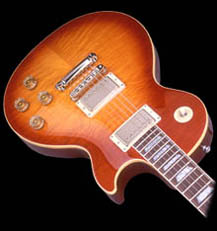

| Fret # | String Length |
| 0 | 64.5 |
| 1 | 60.7 |
| 2 | 57.4 |
| 3 | 54.1 |
| 4 | 51.1 |
| 5 | 48.3 |
| 6 | 45.5 |
| 7 | 43 |
| 8 | 40.6 |
| 9 | 38.4 |
| 10 | 36.3 |
| 11 | 34.2 |
| 12 | 32.3 |
| 13 | 30.4 |
| 14 | 28.7 |
| 15 | 27.1 |
| 16 | 25.6 |
| 17 | 24.2 |
| 18 | 22.8 |
| 19 | 21.6 |
| 20 | 20.4 |


| Fret # | String Length | Ratio |
| 0 | 64.5 | 0.941085271317829 |
| 1 | 60.7 | 0.945634266886326 |
| 2 | 57.4 | 0.942508710801394 |
| 3 | 54.1 | 0.944547134935305 |
| 4 | 51.1 | 0.945205479452055 |
| 5 | 48.3 | 0.942028985507246 |
| 6 | 45.5 | 0.945054945054945 |
| 7 | 43 | 0.944186046511628 |
| 8 | 40.6 | 0.945812807881773 |
| 9 | 38.4 | 0.9453125 |
| 10 | 36.3 | 0.942148760330579 |
| 11 | 34.2 | 0.944444444444444 |
| 12 | 32.3 | 0.941176470588235 |
| 13 | 30.4 | 0.944078947368421 |
| 14 | 28.7 | 0.944250871080139 |
| 15 | 27.1 | 0.944649446494465 |
| 16 | 25.6 | 0.9453125 |
| 17 | 24.2 | 0.942148760330579 |
| 18 | 22.8 | 0.947368421052632 |
| 19 | 21.6 | 0.944444444444444 |
| 20 | 20.4 | 0 |
| Arithmetic Mean = | 0.944069960724122 |
| Fret # | String Length | Exponential Function Results |
| 0 | 64.5 | 64.368 |
| 1 | 60.7 | 60.7651610204552 |
| 2 | 57.4 | 57.3639820072373 |
| 3 | 54.1 | 54.1531755444363 |
| 4 | 51.1 | 51.1220860012219 |
| 5 | 48.3 | 48.2606541692426 |
| 6 | 45.5 | 45.5593838793583 |
| 7 | 43 | 43.009310486918 |
| 8 | 40.6 | 40.6019711209969 |
| 9 | 38.4 | 38.3293765988573 |
| 10 | 36.3 | 36.1839849124291 |
| 11 | 34.2 | 34.1586761988174 |
| 12 | 32.3 | 32.2467291117749 |
| 13 | 30.4 | 30.4417985157222 |
| 14 | 28.7 | 28.7378944282891 |
| 15 | 27.1 | 27.1293621414963 |
| 16 | 25.6 | 25.6108634556031 |
| 17 | 24.2 | 24.1773589633454 |
| 18 | 22.8 | 22.8240913257679 |
| 19 | 21.6 | 21.5465694841515 |
| 20 | 20.4 | 20.3405537556378 |
| Fret # | String Length |
| 0 | 50 |
| 1 | 47.2013741458918 |
| 2 | 44.5593944252092 |
| 3 | 42.0652929595733 |
| 4 | 39.7107926308273 |
| 5 | 37.4880796119521 |
| 6 | 35.3897774354945 |
| 7 | 33.4089225134523 |
| 8 | 31.5389410273714 |
| 9 | 29.7736271119635 |
| 10 | 28.1071222598411 |
| 11 | 26.5338958790217 |
| 12 | 25.0487269386768 |
| 13 | 23.6466866422152 |
| 14 | 22.3231220701972 |
| 15 | 21.0736407387959 |
| 16 | 19.8940960225602 |
| 17 | 18.7805733931033 |
| 18 | 17.7293774280449 |
| 19 | 16.7370195470976 |
| 20 | 15.8002064345931 |

